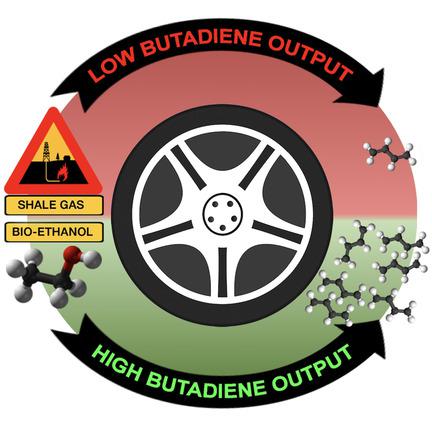当前位置:
X-MOL 学术
›
Chem. Asian J.
›
论文详情
Our official English website, www.x-mol.net, welcomes your feedback! (Note: you will need to create a separate account there.)
Recent Advances in Catalysts for the Conversion of Ethanol to Butadiene
Chemistry - An Asian Journal ( IF 4.1 ) Pub Date : 2020-10-18 , DOI: 10.1002/asia.202001023 Ismail Bin Samsudin 1 , Hongwei Zhang 1 , Stephan Jaenicke 1 , Gaik‐Khuan Chuah 1
Chemistry - An Asian Journal ( IF 4.1 ) Pub Date : 2020-10-18 , DOI: 10.1002/asia.202001023 Ismail Bin Samsudin 1 , Hongwei Zhang 1 , Stephan Jaenicke 1 , Gaik‐Khuan Chuah 1
Affiliation

|
Butadiene is an important monomer for synthetic rubbers. Currently, the annual demand of ∼16 million tonnes is satisfied by butadiene produced as a byproduct of steam naphtha cracking where ethylene and propylene are the main products. The availability of large amounts of shale gas and condensates in the USA since about 2008 has led to a change in the cracker feed from naphtha to ethane and propane, affecting the amount of butadiene obtained. This has provided the impetus to look into direct processes for butadiene production. One option is the eco‐friendly conversion of (bio) ethanol to butadiene (ETB). This process had been developed in the 1930s in the then Soviet Union. It was operated on a large scale in USA during World War II but has since been abandoned in favour of petroleum‐based processes. The current trend, driven both by the availability of the raw material and ecological considerations, may make this process feasible again, particularly if the catalytic systems can be improved. This critical review discusses recent catalysts for the ETB process with special focus on the development since 2014, benchmarking them against earlier systems with a large database of operational experience.
中文翻译:

乙醇转化为丁二烯的催化剂的最新进展
丁二烯是合成橡胶的重要单体。目前,作为蒸汽石脑油裂解副产品生产的丁二烯满足了每年约1600万吨的需求,其中乙烯和丙烯是主要产品。自2008年前后以来,美国大量页岩气和凝析油的供应使裂解塔的原料从石脑油转变为乙烷和丙烷,从而影响了丁二烯的获得量。这为研究丁二烯生产的直接工艺提供了动力。一种选择是将(生物)乙醇环保转化为丁二烯(ETB)。这个过程是在1930年代当时的苏联开发的。在第二次世界大战期间,它在美国大规模运行,但此后被废弃,转而使用石油工艺。目前的趋势 由原材料的可用性和生态方面的考虑所驱动,这可能使该过程再次可行,特别是如果可以改进催化体系的话。这篇重要的评论文章讨论了ETB流程的最新催化剂,并特别关注2014年以来的发展,将它们与具有大量运营经验数据库的早期系统进行比较。
更新日期:2020-12-16
中文翻译:

乙醇转化为丁二烯的催化剂的最新进展
丁二烯是合成橡胶的重要单体。目前,作为蒸汽石脑油裂解副产品生产的丁二烯满足了每年约1600万吨的需求,其中乙烯和丙烯是主要产品。自2008年前后以来,美国大量页岩气和凝析油的供应使裂解塔的原料从石脑油转变为乙烷和丙烷,从而影响了丁二烯的获得量。这为研究丁二烯生产的直接工艺提供了动力。一种选择是将(生物)乙醇环保转化为丁二烯(ETB)。这个过程是在1930年代当时的苏联开发的。在第二次世界大战期间,它在美国大规模运行,但此后被废弃,转而使用石油工艺。目前的趋势 由原材料的可用性和生态方面的考虑所驱动,这可能使该过程再次可行,特别是如果可以改进催化体系的话。这篇重要的评论文章讨论了ETB流程的最新催化剂,并特别关注2014年以来的发展,将它们与具有大量运营经验数据库的早期系统进行比较。



























 京公网安备 11010802027423号
京公网安备 11010802027423号